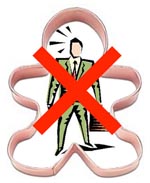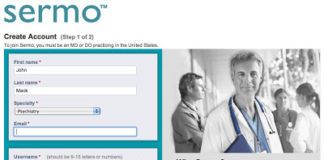Vol. 10, Issue No. 7: 15 APRIL 2011 – EXECUTIVE SUMMARY
CONTENTS
(Click on titles to see a summary and find link to full text of each item)
- The Changing Role of Pharma Sales Reps
- Mining Mobile Health App User Data
- (Little) Used Drug for Sale. GSK Says, Bye Bye Alli!
- Ad Dollars Follow Eyeballs to Web
- Phil Mickelson is Now Regulated by FDA
- Brits Beat FDA & PhRMA: Issue Social Media Guidance for Pharma
Article Summaries The Changing Role of Pharma Sales Reps
Reaching Physicians Requires a New Level of Sophistication
 Pharma companies need to drive maximum value out of products and you can’t do that by deploying a “one-size-fits-all” cookie-cutter approach in how you deploy your field forces.
Pharma companies need to drive maximum value out of products and you can’t do that by deploying a “one-size-fits-all” cookie-cutter approach in how you deploy your field forces.
Although the pharmaceutical industry has been historically slow to embrace change in its sales approach, decreasing margins are driving even the most reluctant to find more flexible approaches at a lower cost to meet the needs of its ever widening customer population. Discussions with industry leaders testify to this fact, and although each company interviewed may have its own perception on how the sales models will evolve, many brand managers will look to outsourced providers for guidance in these areas and to take advantage of the expertise these providers can bring to the table.
This article is a summary of an interview of Nancy Lurker, CEO of PDI, Inc., which provides promotional outsourced services to healthcare companies.
Topics include:
- Value Outcome Selling
- Factors Driving the Change
- Chart: Recent Major U.S. Sales Force Reductions
- Chart: Drug Industry Layoffs from 2000 through 2010.
- Demand for High Quality Reps Increasing
- Table: Expected Patent Expirations – Top 16 Therapeutic Areas
- Interview of Nancy Lurker
- The Need for a Flexible Sales Force
- Chart: Evolving Representative Classifications
- Qualifications for Today’s Reps
Order and pay for this reprint now using your credit card…
ONLY $4.95Download PDF file immediately after paying:
Mining Mobile Health App User Data
Liberating Health Data While Protecting Privacy
 A conversation with Jacqueline Thong, co-founder and CEO of Ubiqi Health, about disease management mobile applications and how pharma marketers can leverage mobile health apps to engage with and learn from patients.
A conversation with Jacqueline Thong, co-founder and CEO of Ubiqi Health, about disease management mobile applications and how pharma marketers can leverage mobile health apps to engage with and learn from patients.
Recently, Ubiqi Health’s Migraine Tracker crossed the 2500 download mark. With that critical mass of data in its system, Ubiqi can learn from its users information about the most frequently cited migraine triggers and treatments as well as information about pain scores, migraine duration, etc. All this information is available to 3rd parties — eg, pharmaceutical companies — in user de-identifiable format.
“Mobile is seen as a way to liberate health data,” says Qureshi, who writes for the Meaningfuluses healthcare IT blog. “But only if the public can trust it to safeguard their data. Unlike desktop medical applications where enterprises created barriers to information, mobile health apps are distributed directly to patient consumers. This is refreshing, in that gathering health data has become extensible, distributable, while at the same time affordable.”
Some Questions/Topics Discussed
- What have you seen are the main drivers for consumers to use your tools?
- How are physicians reacting to mobile apps like yours?
- What kind of data have you been able to collect through your system?
- In what ways do you see that pharma marketers can leverage mobile apps?
- What are some key considerations or challenges when creating healthcare mobile apps?
- What about upcoming FDA regulations of mobile apps?
(Little) Used Drug for Sale. GSK Says, Bye Bye Alli! “Four years after launching the nonprescription diet pill Alli with much fanfare and a heavy marketing budget, U.K. drug maker GlaxoSmithKline PLC (GSK) on Thursday said that it plans to sell off the drug,” according to this story in today’s WSJ.
“Four years after launching the nonprescription diet pill Alli with much fanfare and a heavy marketing budget, U.K. drug maker GlaxoSmithKline PLC (GSK) on Thursday said that it plans to sell off the drug,” according to this story in today’s WSJ.
A big Duh! Back in November, 2010, Pharmaguy noted that the EU would release data in December that could put Alli diet pill sales in the toilet. GSK “acknowledged in February that demand for the drug was falling in the U.S. and Europe.”
Read more about why here. Ad Dollars Follow Eyeballs to Web Internet advertising revenue in the United States totaled $26.0 billion for the full year of 2010, whereas ad revenue earned by newspapers was $22.8 billion, according to a PwC/IAB report
Internet advertising revenue in the United States totaled $26.0 billion for the full year of 2010, whereas ad revenue earned by newspapers was $22.8 billion, according to a PwC/IAB report
Search continues to get the largest share of online revenue, although this share decreased to 46% in 2010 from 47% in 2009. Still, search revenue totaled $12.0 billion in 2010, up over 12% from $10.7 billion in 2009. Display-related advertising revenues — which includes revenue from display banners, rich media, digital video, and sponsorships — totaled $9.9 billion or 38% percent of 2010 revenues, up 24% from the $8.0 billion reported in 2009. Digital video ad revenue accounts for 5% ($1.4 billion) of the total Web ad revenue.
For more data & charts, including a “guesstimate” for how much pharma spends on Web advertising: Click Here. Phil Mickelson is Now Regulated by FDA Recall that last summer Phil Mickelson was quoted in the press as saying he was treating his Psoriatic Arthritis with ENBREL. He was also quoted as saying: “I have no aches and pains. My back feels great. I feel stronger and more flexible than I’ve ever been”.
Recall that last summer Phil Mickelson was quoted in the press as saying he was treating his Psoriatic Arthritis with ENBREL. He was also quoted as saying: “I have no aches and pains. My back feels great. I feel stronger and more flexible than I’ve ever been”.
Now that he is featured in ENBREL TV ads, his commercial speech is regulated by the FDA and he can no longer make outlandish statements such as the one above.
So what can he say? Read more about that here. Brits Beat FDA & PhRMA: Issue Social Media Guidance for Pharma The Brits have won the race to issue social media guidance for the drug industry! (OK, it’s NOT a race. Still, everyone says the EU regulators FOLLOW FDA’s lead. Here’s a case where the horse is following the cart!)
The Brits have won the race to issue social media guidance for the drug industry! (OK, it’s NOT a race. Still, everyone says the EU regulators FOLLOW FDA’s lead. Here’s a case where the horse is following the cart!)
The Prescription Medicines Code of Practice Authority (PMCPA), which oversees the self-regulatory code of the Association of the British Pharmaceutical Industry (ABPI), just published “informal guidance” providing the drug industry advice on how to use online communications.
Read more about this here.





![6 Digital Tools at the Center of Healthcare Digitalization [INFOGRAPHIC]](http://ec2-54-175-84-28.compute-1.amazonaws.com/pharma-mkting.com/wp-content/uploads/2021/04/6DigitalTools_600px-218x150.jpg)




![6 Digital Tools at the Center of Healthcare Digitalization [INFOGRAPHIC]](http://ec2-54-175-84-28.compute-1.amazonaws.com/pharma-mkting.com/wp-content/uploads/2021/04/6DigitalTools_600px-100x70.jpg)




